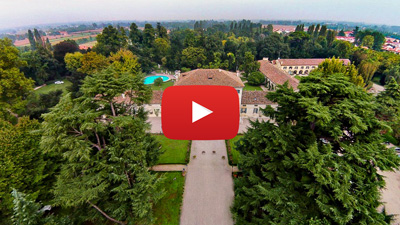Suite Villa
Suite Villa
The Villa’s flagship, the most exclusive and representative rooms of the historic charm of Condulmer are the Villa Suites. Positioned on the first and second floors of the historic residence, they are witnesses of the creative and strategic genius of the world-famous people who stayed there.
1 – SUITE GIUSEPPE VERDI

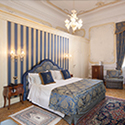 A suite dedicated to Giuseppe Verdi, the composer of Nabucco, Rigoletto, Traviata, Aida, Otello, Joan of Arc, Macbeth and much more. The composer was deeply connected to the Villa and to the Count Tornielli.
A suite dedicated to Giuseppe Verdi, the composer of Nabucco, Rigoletto, Traviata, Aida, Otello, Joan of Arc, Macbeth and much more. The composer was deeply connected to the Villa and to the Count Tornielli.
DETAILS
2 – SUITE LIZ TAYLOR

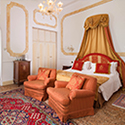 To the beautiful Elizabeth Taylor is entitled the suite n ° 2 of the Villa, in memory of the stay that had the diva of “The Taming of the Shrew” and “Cleopatra”, guest in the villa together with the famous husband, Richard Burton.
To the beautiful Elizabeth Taylor is entitled the suite n ° 2 of the Villa, in memory of the stay that had the diva of “The Taming of the Shrew” and “Cleopatra”, guest in the villa together with the famous husband, Richard Burton.
DETAILS
3 – SUITE DEGLI ARTISTI

 The Suite No. 3 of the Villa is dedicated to all the artists who attended Villa Condulmer, attracted both by the prestigious “Condulmer Recording Studio” adjacent to the hotel, and by the extraordinary quiet that reigns in the Villa.
The Suite No. 3 of the Villa is dedicated to all the artists who attended Villa Condulmer, attracted both by the prestigious “Condulmer Recording Studio” adjacent to the hotel, and by the extraordinary quiet that reigns in the Villa.
DETAILS
4 – SUITE RONALD REAGAN

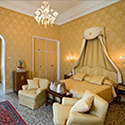 On Wednesday, June 3, 1987 at 10:15 pm, US President Ronald Reagan and his consort Nancy landed at Venice’s Marco Polo airport. A helicopter was waiting for them to take them to the historic hotel.
On Wednesday, June 3, 1987 at 10:15 pm, US President Ronald Reagan and his consort Nancy landed at Venice’s Marco Polo airport. A helicopter was waiting for them to take them to the historic hotel.
DETAILS
5 – SUITE PAPA EUGENIO IV
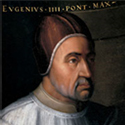
 The most illustrious ancestor of Alvise Condulmer, the Venetian patrician who commissioned the construction of the Villa, is certainly Gabriele Condulmer, better known as Pope Eugene IV. He was born in Venice in 1383.
The most illustrious ancestor of Alvise Condulmer, the Venetian patrician who commissioned the construction of the Villa, is certainly Gabriele Condulmer, better known as Pope Eugene IV. He was born in Venice in 1383.
DETAILS
6 – SUITE MARGHERITA CONDULMER

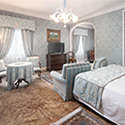 Daughter of the Venetian patrician Tomaso Condulmer, Margherita Condulmer married in 1772 to N.H. Venetian Giovanni Grassi. The latter was given the home and the agricultural properties of the family.
Daughter of the Venetian patrician Tomaso Condulmer, Margherita Condulmer married in 1772 to N.H. Venetian Giovanni Grassi. The latter was given the home and the agricultural properties of the family.
DETAILS
7 – SUITE ALVISE CONDULMER

 Unmissable, among our suites, one dedicated to the one who commissioned the construction of the Villa, the “Nobil Homo Veneto” Alvise Condulmer.
Unmissable, among our suites, one dedicated to the one who commissioned the construction of the Villa, the “Nobil Homo Veneto” Alvise Condulmer.
DETAILS
8 – SUITE CONTI TORNIELLI
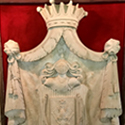
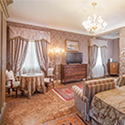 Of the Tornielli family, of Longobard origins and of its forefather Ildebrando, we have certain news since the dawn of the thirteenth century.
Of the Tornielli family, of Longobard origins and of its forefather Ildebrando, we have certain news since the dawn of the thirteenth century.
DETAILS

 Italiano
Italiano Español
Español
